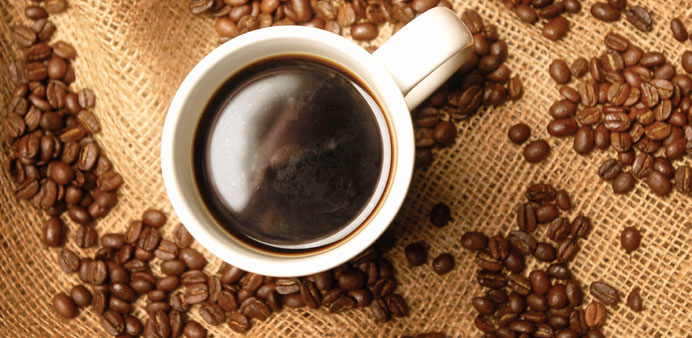By David Cox/London
Over the past 400 years, caffeine has become an almost essential part of everyday life in the western world. Found naturally in over 60 species of plants, for most of us it’s synonymous with the morning ‘pick-me-up’ coffee or a necessary means of sharpening the senses during a particularly drowsy afternoon. It’s believed that 90% of Americans consume caffeine in some form on a daily basis.
But beyond its widespread use as a stimulant, caffeine actually has various hidden athletic benefits - so much so that many of the world’s leading distance runners include it as a vital part of their pre-race preparations.
“Twenty minutes before a race I’ll normally drink some coffee,” Mo Farah revealed in his autobiography Twin Ambitions. “As I walk onto the stadium track, I feel this massive caffeine high.”
At first glance, it may seem a little foolish for an athlete to be drinking coffee. After all, caffeine is well known to cause dehydration, initiating a diuretic effect by stimulating the production of urine. In reality, this is only the case while resting - during exercise this mechanism is overruled.
But Farah and his rivals are not taking coffee purely to feel more alert. Moderate amounts of caffeine are increasingly being used to enhance endurance performance, particularly in the mid to latter stages of a race.
“Caffeine doesn’t provide any additional energy in itself but over a long period of time, such as a half marathon or above, it helps you maintain a work level,” says Emma Barraclough, senior sports nutritionist for Science in Sport.
“It allows Mo to keep pushing hard even when he’s starting to fatigue and his lactic levels are increasing. Typically, he’ll run at very close to his threshold pace for the majority of his shorter races, although that changes a little for the marathon.”
For this reason, caffeine used to be regarded as a restricted substance in elite competition, with urinary concentrations in excess of 12µg/ml (the equivalent of six cups of coffee) regarded as being illegal. The World Anti-Doping Agency (WADA) have since abolished this limit, although they are still monitoring research into caffeine to detect whether certain levels may represent an unfair performance enhancement.
However, for all the evidence surrounding the effectiveness of caffeine, researchers have yet to come to a unified agreement as to exactly how it works. Caffeine is absorbed through the gastrointestinal tract before being metabolised in the liver and the prevailing theory is that it enhances fat oxidation, allowing muscle glycogen levels to be conserved over a much longer period of time. However, the hard evidence for this theory is very limited and many researchers feel it remains questionable whether caffeine affects fat oxidation at all.
Caffeine is rapidly absorbed into the brain and Barraclough, for one, thinks it is more likely that its direct effect on the central nervous system may actually alter your body’s perception levels of effort, pain and fatigue.
“Recent research has established that the brain is the ‘central governor’ of fatigue and is responsible for the regulation of effort,” she says. “For instance, if you really start to increase your effort levels towards the end of a long run, your brain will detect the increased acidosis from the increase in lactic acid, and the increased concentration of carbon dioxide in your muscle tissue from the additional energy production. It knows this is disturbing the homeostasis of your body and will try to slow you down as a result. Caffeine can override this effect, helping you to maintain your effort level as you clock the miles up.”
As a result, a number of companies have begun introducing caffeine into energy gels and drinks. Some contain as little as 30mg, which will have virtually no impact on performance - around 75mg is considered a reasonable dose. Caffeine’s effect lasts for around an hour but its levels will take some time to peak in the bloodstream, typically between 30 and 60 minutes. So, for events which are shorter than 90 minutes, you will need to take the total dose beforehand to get any benefit. For marathons or ultra-runs, runners are advised to save the caffeine for when they need it most, for example mile 20 of the marathon when you’re starting to hit that wall.
“If you’re likely to be racing for many hours, it’s a good idea to try and drip-feed the caffeine,” Barraclough says. “For example, rather than taking it all at once, you could swap one or two of your normal energy gels for caffeine ones for the last two hours.”
If you do choose to use caffeine in a race, it’s a good idea to try and test drive your regime a couple of times during training to find what works for you. Both sensitivity to caffeine and the rate at which it is metabolised vary hugely between individuals. A typical recommended dosing range is between 3mg and 5mg per kilo of body mass for endurance runners. But it’s important not to exceed 8mg per kilo of body mass. This can not only lead to unwanted side effects such as increased heart rate but some runners may find such a large dose affects the sensitivity of the gut, increasing the chances of a bout of the “runner’s trots”.
Consuming caffeine via a gel or preparing your own pre-race drink could also be a better bet than an over-the-counter energy drink which gives everyone a fixed dose. “Most studies on caffeine have looked at doses in relation to body mass so there’s very little evidence either way on the efficacy of fixed doses in, say, a can of Red Bull or ProPlus tablets,” says Phil Watson, an exercise and health sciences researcher at Loughborough University. “It’s a bit surprising no one’s looked at this as that’s the way many people would look to take it pre-race.”
But it should also be remembered that caffeine is essentially a stimulant and like many performance-enhancing supplements, tapping into its benefits on a regular basis, rather than just once in a while, may come at something of a cost.
Regular ingestion of caffeine can lead to withdrawal symptoms and, if constantly used to trick your brain into overcoming fatigue while running, you risk becoming dependent on that stimulation in order to complete sessions. This can potentially be overcome by using it intermittently during training and then reducing your intake in the week leading up to a race.
Research has also suggested that combining caffeine and exercise decreases the concentration of antigen-stimulated T cells. These are a crucial part of the body’s adaptive immune system and regularly lowering their levels will leave you susceptible to getting ill.
However, this shouldn’t put you off caffeine completely, as this is currently not well substantiated and the effect has only been shown to occur if you take a rather large dose (6mg per kilo of body mass).
“I would stick to 3mg/kg body mass which has consistently improved performance across a number of studies, and is less likely to cause side effects like jitteriness, tremors and difficulty sleeping,” Watson says.
Research is also ongoing into the potential benefits for more short-term, high intensity exercise. A variety of studies have found that doses of caffeine improved sprinting and motor skills performance in rugby and football players, as well as the agility of volleyball teams.
However, caffeine is unlikely to become a regular part of everyday training regimes in the Premier League anytime soon. The best guideline for exploiting its benefits is perhaps to follow Farah. Save it when it really matters - race day! - Guardian News & Media Ltd

Caffeine’s direct effect on the central nervous system may actually alter your body’s perception levels of effort, pain and fatigue.


